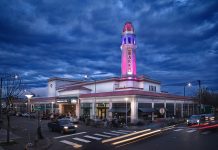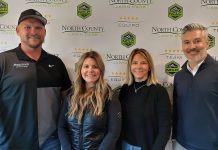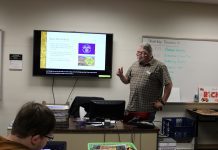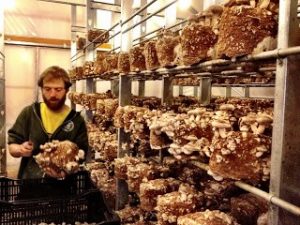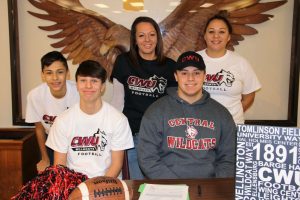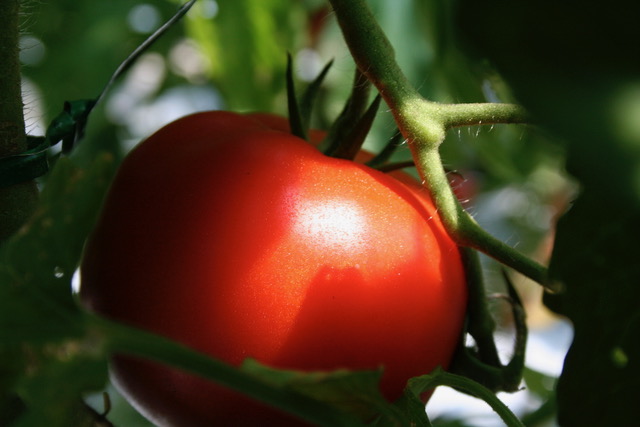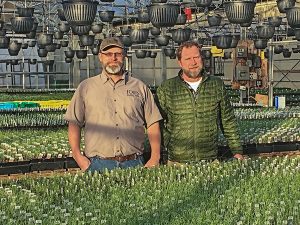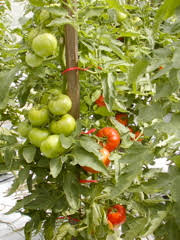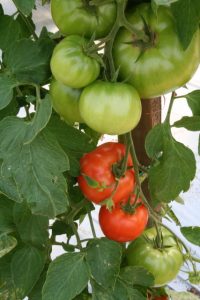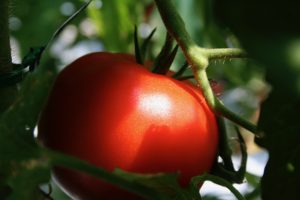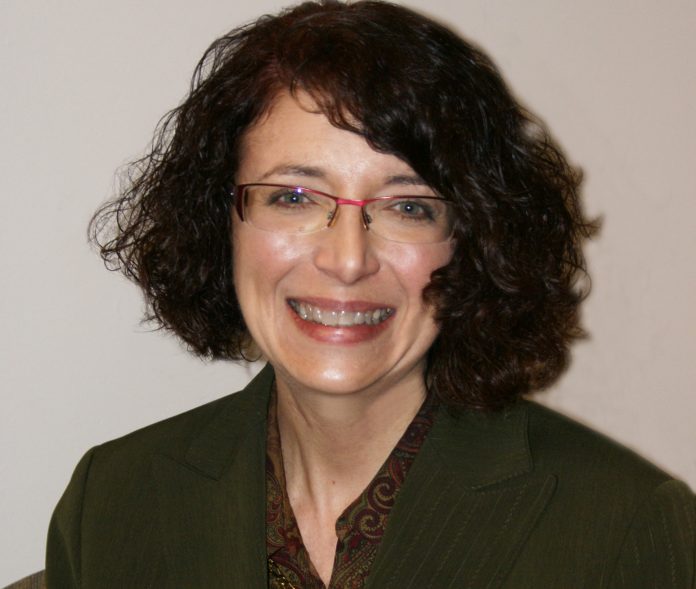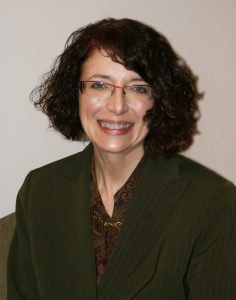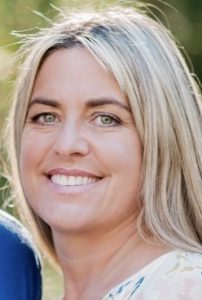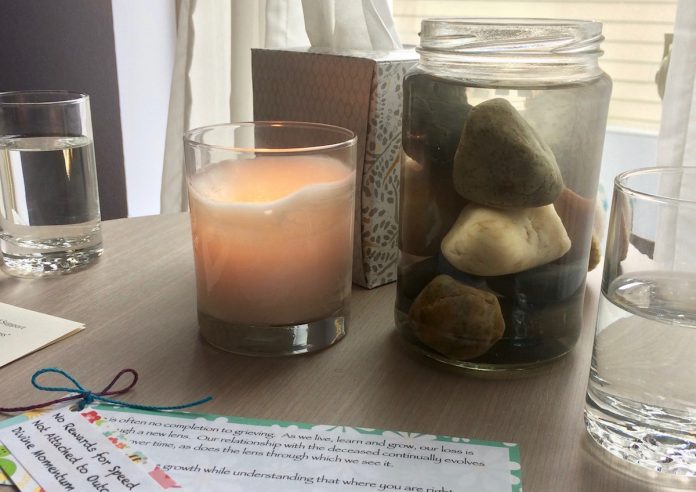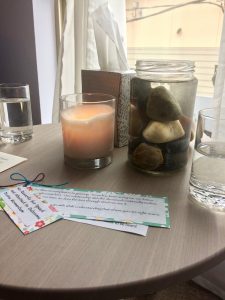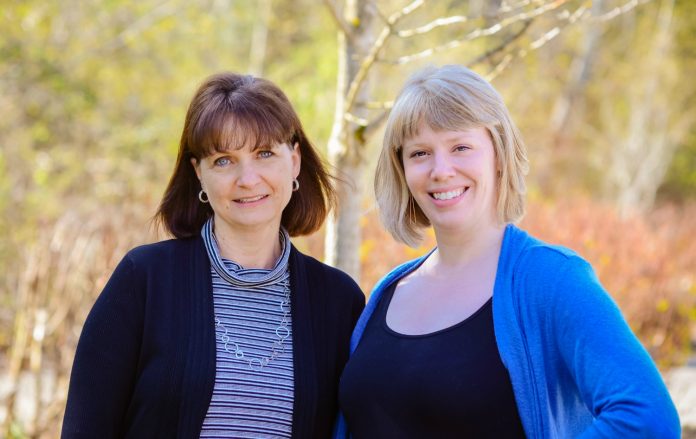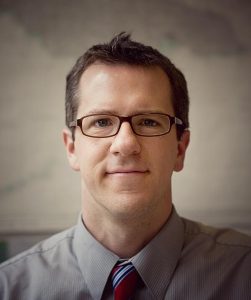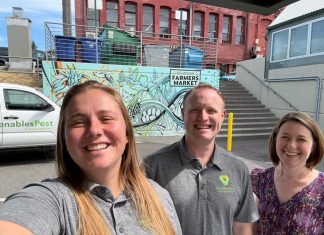What began as a tiny operation in Alex Winstead’s basement has since grown into a full-time farming business dedicated to growing the best mushrooms possible using organic growing practices. Cascadia Mushrooms’ 7,000 square feet of insulated growing space produces around 500 pounds of certified organic mushrooms each week.

Garrett Bays has been working with Winstead for five years now. “I helped him put together the greenhouses,” Bays shared. “At that time it was really more of a hobby for me. I had been growing mushrooms since high school and came into this really excited.”
Winstead asked Bays to start as a part-time mushroom picker but it didn’t take long for him to gain new experience in production and by helping customers and offering workshops. Now that Cascadia Mushrooms is offering their mushroom compost to Whatcom County gardeners, Bays is helping educate folks about the myriad benefits it provides.
“Mushroom compost is kind of a human hack on the natural process,” shared Bays. Using compost in a home garden helps build good soil structure by enabling retention of water, air and nutrients. And while you can make your own compost at home, buying a high-quality product helps speed up the process of getting those good nutrients in the ground for your fruits and veggies.
All compost is processed by microbes and bacteria but that doesn’t mean it’s all created equal. “We’re already growing mushrooms so we have the compost that would happen naturally,” explained Bays. “The reason it’s better than your average compost is because we allow nature to do its job. We don’t rush anything. We let nature do it the way it wants to.”
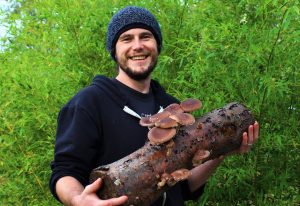
According to Bays, manufactured composts are more like a mix of fertilizers than actual compost. These lab-developed fertilizers look good on paper but because they aren’t in a form that’s bioavailable to plants, they don’t translate to being effective in the garden. “Mushroom compost is the perfect form for plants,” Bays said.
Cascadia Mushrooms’ compost is a natural byproduct of their fungi production, which starts with Certified Organic alder sawdust from a local mill, mixed with a bit of organic barley and wheat bran. This mixture is steam sterilized before introducing the mushroom spawn for incubation. Incubated mushrooms turn sawdust to logs, which are then moved into their grow room. The mushrooms grow from the tops and sides of the logs in the climate-controlled environment. Fungus attacks cellulose material first, so what remains after harvest is a light mass that is then turned into compost.
“It’s like picking up a log that’s all air and that’s because the fungi has broken down a lot of the cellulose,” shared Bays. Once those sugars and nutrients have been broken down with the fungi, microbes come in and break it down further, metabolizing it into a compost made of raw, mineral forms of nutrients.
“We’re not doing anything special, we’re just relying on those natural processes,” said Bays. “We’re working in concert with hundreds of microbial species. We’re really trying to perfect the habitat.”
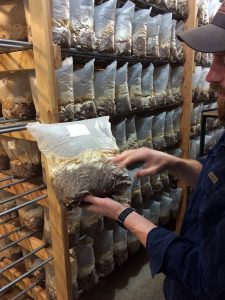
While it might sound unsettling to some, the microbes present in mushroom compost are an important part of a healthy habitat. These good bacteria help create a healthier, more fertile soil, which translates into good eats for you and yours.
Plus the good microbes help keep the bad ones in check. “We’re so bacteria-phobic in our culture,” said Bays. “Without having the natural balance in that environment, the specific bacterias that are unhealthy have a chance to proliferate.”
Cascadia Mushrooms is a community business invested in supporting positive, local growth. Their goal is to nurture fungi’s innate ability to cleanse the soil and heal the environment, to teach others about that ability and to spark the same inspiration that drives their work every day. They see a return to smaller, intentional farming as a way to reconnect with natural processes, and are able to take advantage of modern technology and tools while still staying connected to the value of traditional practices.
“We’ve taken farming beyond the natural and tried to make it function at high levels,” shared Bays. “With big industries we’ve lost sight of the reason why we do things the way we do. We want to fix that lost connection.”
Offering compost is one way Cascadia Mushrooms is able to help nourish the community. You can do your part by nourishing your own soil with their high-quality, organic mushroom compost, available every week at Bellingham Farmers Market, or in larger quantities at their farm. Visit their website or give them a call at 360-714-8859 to learn more.
Sponsored















